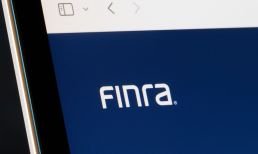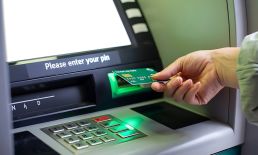The B2B payments ecosystem experienced a sudden and dramatic acceleration of change upon the onset of the global pandemic, and its impacts reach far beyond the mere digitization of the B2B transaction.
Yes, many organizations shifted the needle away from the paper check toward ePayment tools like commercial cards and ACH as a result of necessity. Accounts payable (AP) departments were no longer in the office to cut paper checks, and accounts receivable (AR) personnel were no longer in the office to receive them.
Even if and when paper checks are eliminated from the B2B payments ecosystem, industry experts say there is plenty of friction remaining in other processes and workflows. Corporate Spending Innovations (CSI) President David Disque, for instance, spoke with PYMNTS about the challenges organizations face regarding interconnectivity with their business partners, as well as the friction that exists in moving not only electronic money, but electronic data from one corporate to another.
But this shift is only a fraction of the disruption B2B payments saw in 2020, with the year giving way to a boom in B2B eCommerce and shifts in business models that continue to alter the way businesses send and receive payments.
The migration of the procurement and purchasing process to seller platforms and digital marketplaces will be a driving force into 2021, B2B payment leaders agree, and this trend will drive further change in both payer and payee expectations.
According to Visa’s Alan Koenigsberg, global head of New Payment Flows at Visa Business Solutions, the name of the game for 2021 and beyond is all about making progress toward the same goal that has been around for years: greater efficiency. How that is achieved is a matter of innovation and experimentation.
Advertisement: Scroll to Continue
“Frankly, the story never changes,” he told PYMNTS earlier this month. “It’s just the tune keeps adapting.”
Increasingly, as B2B payment innovators discussed, that adaptability is giving way to accelerated infrastructure innovation, as well as new business and payment models, all in pursuit of greater efficiency.
The Coexistence Of Rails
As Koenigsberg described, interoperability of payment rails old and new will be key to driving the kind of adaptability B2B payments will need in the year ahead. Underlying infrastructure must be optimized to work seamlessly with other systems in place to move money — and data — where and when it needs to go. Often, that means the cooperation of multiple rails at once.
James Anderson, executive vice president of Global Commercial and B2B Solutions at Mastercard similarly spoke with PYMNTS in November about the importance of a forward-looking mindset when it comes to payment rails. In Mastercard’s case, that involves embracing a mix of interoperable payment rails via its Mastercard Track Business Payment Service.
Still, the card rails themselves saw significant innovation in 2021 as more organizations turned to card products in their own digitization efforts. And, looking into 2021, the virtual card is positioned to tackle some of the biggest points of friction in B2B payments, including solving working capital needs for both buyers and suppliers, and mitigating fraud and other security risks.
According to Sridhar Narayanan, IBM Payments’ chief architect, the future of B2B payments won’t be about the dominance of one single payment rail or method over another.
“We may see some coexistence in the large organizations space, where cards are already used for purchasing,” Narayanan said in the PYMNTS CFO’s Guide To Digitizing B2B Payments report, powered by Comdata. “But in the [SMB] space, it’ll be interesting to see where the shoe will fall, especially as real-time payments gain traction around the globe.”
It’s All About Timing
While consumer payments innovation today is largely driven by speed, in the world of B2B payments, a more intricate mix of deliberately timed workflows is emerging.
Speed will be key in several workflows of the B2B commerce experience. According to Markus Jansson, chief product officer of Payer, for instance, real-time onboarding of new customers on eCommerce platforms will become vital to the success of B2B vendors.
Indeed, the continued digitization of B2B payments and commerce has opened up the opportunity to accelerate and automate an array of back-office processes on both the buyer and supplier end of a transaction. According to Nasser Chanda, CEO of Paymerang, technologies like artificial intelligence (AI), robotics process automation (RPA) and application programming interfaces (APIs) will be instrumental in accelerating a range of processes within the procure-to-pay and order-to-cash workflows. That’s especially true, he told PYMNTS, when it comes to capturing data from purchase orders and invoices to accelerate document processing and reconciliation.
But while speed is key to these back-office processes, B2B payments themselves will be more greatly impacted by the strategic timing of transactions as more buyers seek to delay payment as long as possible without negatively affecting the supplier relationship.
“More companies will improve their user experience, onboard their customers in real time, and offer them to pay later without having to wait for days — or even a couple of minutes — until they can make their purchase,” said Jansson.
Extend CEO and Co-Founder Andrew Jamison similarly acknowledged the continued rise of buy now, pay later (BNPL) models in B2B payments, although he warned that this trend doesn’t come without its risks, particularly as third-party FinTechs step into facilitate trade credit or other financing models to fuel strategically timed B2B transactions.
“Buy now, pay later is exploding and has the potential to burst,” he said. “With some alternative lenders’ lacking the same underwriting scrutiny of traditional banks, taking on too much risk could pose a serious problem.”
Shifting Business (And Payment) Models
The proliferation of BNPL reflects an ongoing evolution of the age-old practice of selling on trade credit. The model will continue to evolve in 2021 as more FinTechs and alternative finance providers position themselves in the middle of the B2B transaction to support the cash flow of buyers, suppliers or both.
John Tomich, CEO and Co-Founder of CreditKey, told PYMNTS that the COVID-19 crisis has had a significant impact on the availability of credit, particularly for smaller firms, which will cause ripple effects into 2021.
“A higher portion of businesses across all credit tiers … are ramping back up, and new businesses that are forming post-COVID will need increased access to capital, which will be in limited supply,” he said.
This will drive the development of “better and more efficient” payment and credit options, he added.
But BNPL isn’t the only model proliferating in the B2B payment space. Adrian Floate, managing director of Cirralto, explained to PYMNTS that there are a variety of new B2B payment models that will develop in the new year in addition to BNPL.
Installment payments, for instance, can support the automatic payment of overdue invoices in segments, “which gives businesses more flexibility in settling overdue debt and certainty in debt recovery,” he said. There is also the rise of “pay-one, pay-all invoices,” which sees businesses able to batch together outstanding invoices and pay them all at once to save time and money. Finally, said Floate, there will also be a growing opportunity for what he called “workflow payments,” which involve the pre-authorization of a commercial credit card to automatically trigger a payment upon delivery of goods or completion of services.
This effortless transaction allows business owners to get paid quicker, increases security as customers never have to give their credit card details over the phone and increases the efficiency in which debts are paid, he said.
Jansson similarly highlighted the emergence of new business and payment models as organizations consider streaming and performance-based billing as trends that will drive up demand for new B2B payment solutions.
The year 2020 opened up significant opportunities for businesses of all types to flex their business models. For some B2C firms, that meant expanding into the B2B market. For B2B companies, it may mean an evolution from a marketplace or transactional model to a subscription model to a pay-as-you-go model.
These changes will have profound implications for both buyers and suppliers. On the buyer side, adoption of electronic payments that can automate repeat transactions and aggregate payment data will be key. For sellers, automating payment acceptance and cash application will be important, too. For both sides of the B2B transaction, these shifts will impact cash flow and liquidity management strategies.
In any case, businesses will need to embrace digitization, technology interoperability and collaboration with their bank and FinTech solution providers to ease friction and optimize financial workflows.
For B2B payment innovators, there is plenty of competition, but also ample opportunity to drive the industry forward.
“To be a very serious player in B2B payments, you have to say, ‘What kind of changes do you want to drive?'” said Mastercard’s Anderson.




